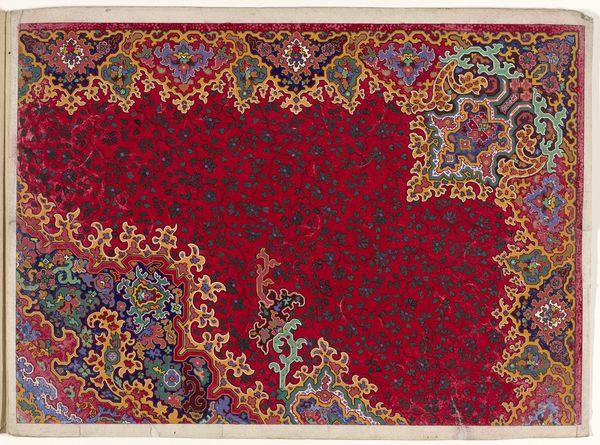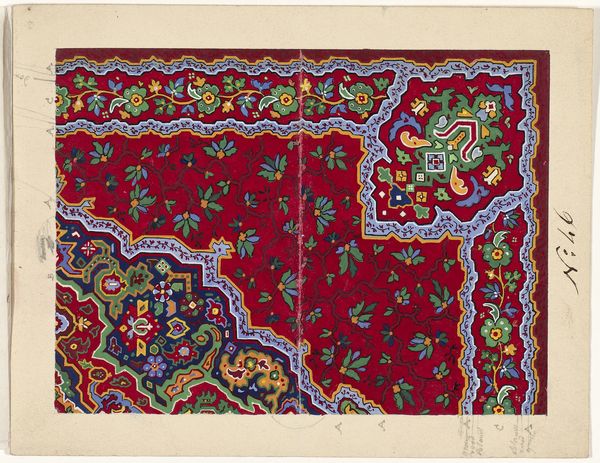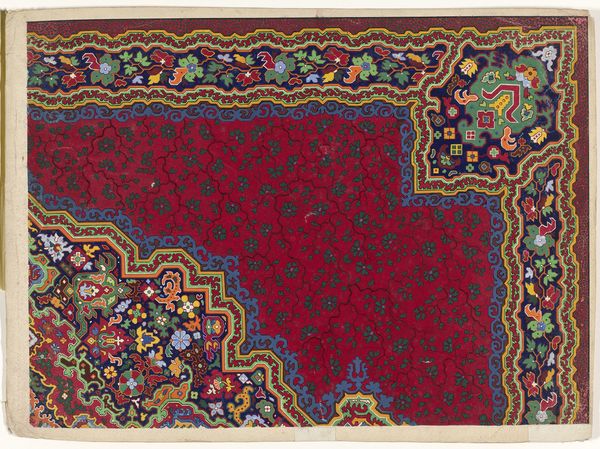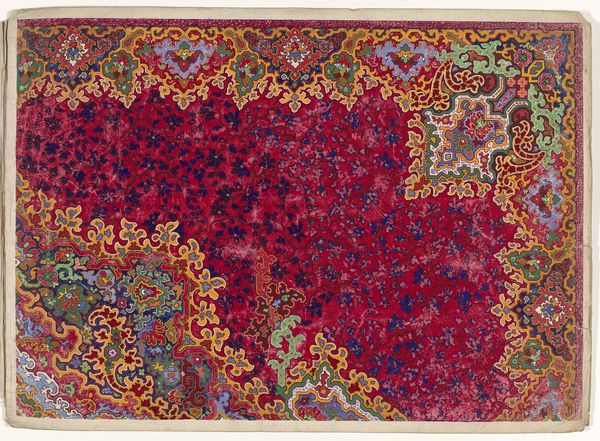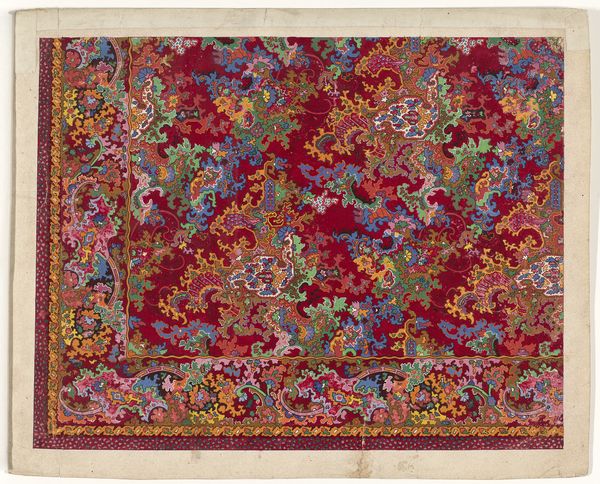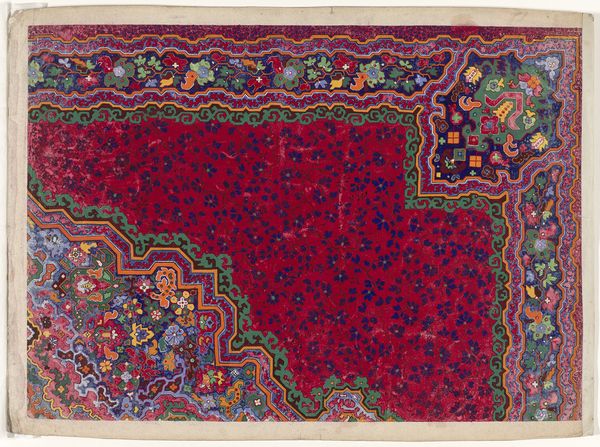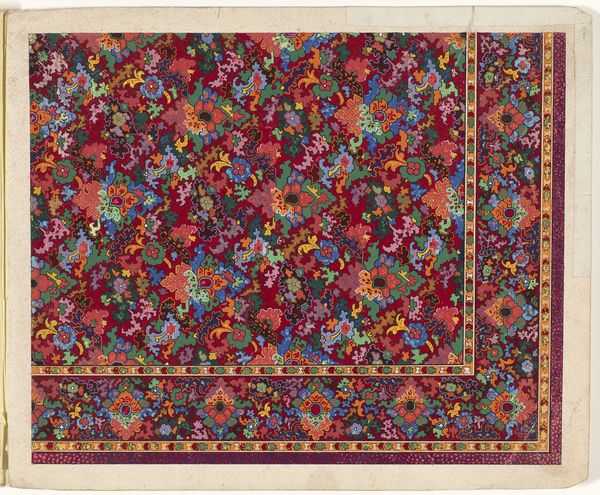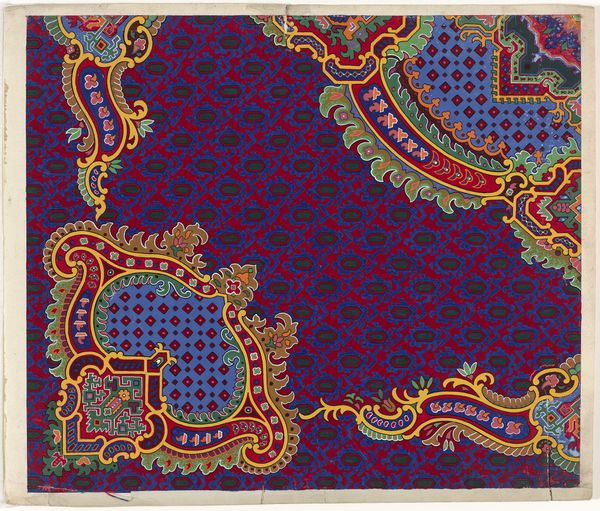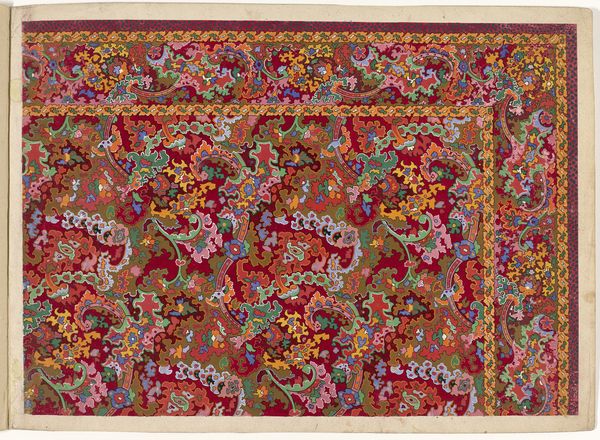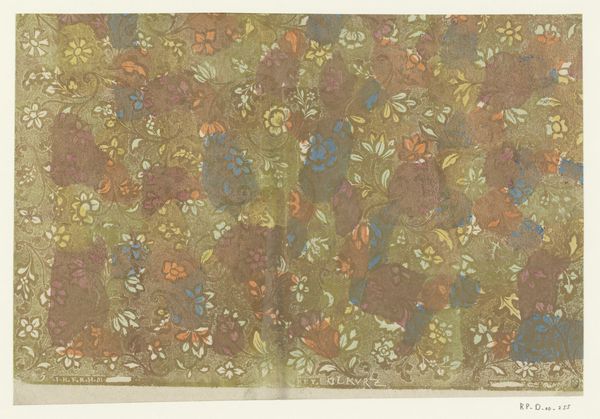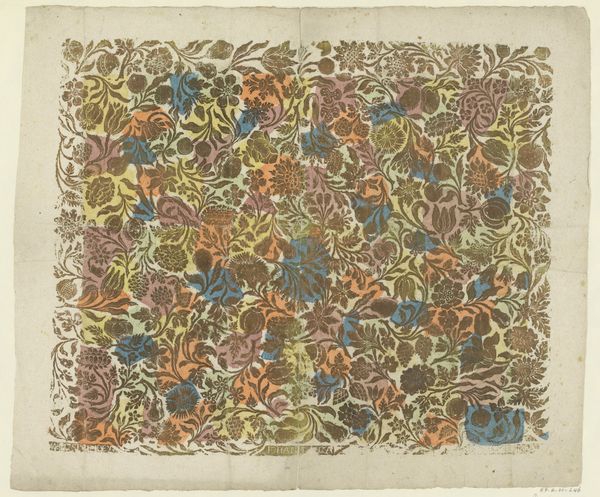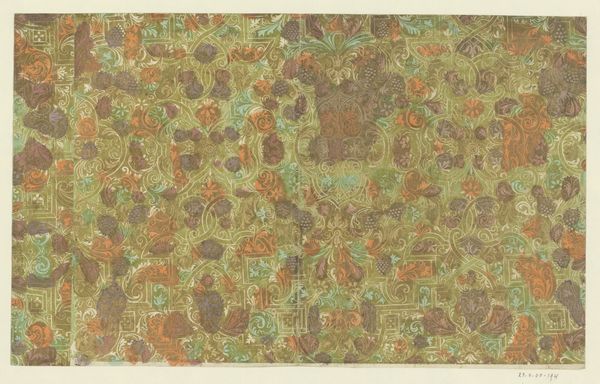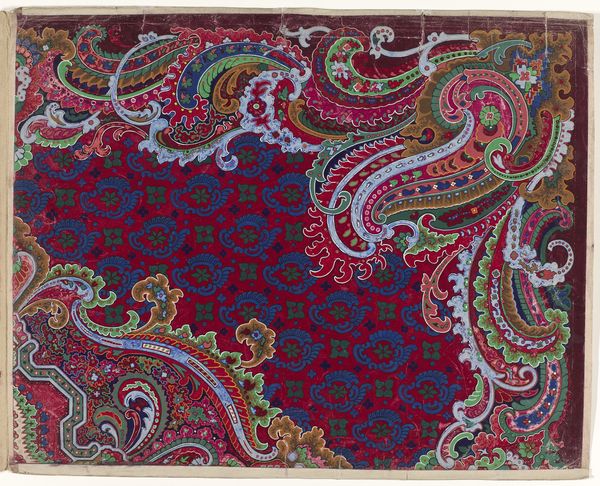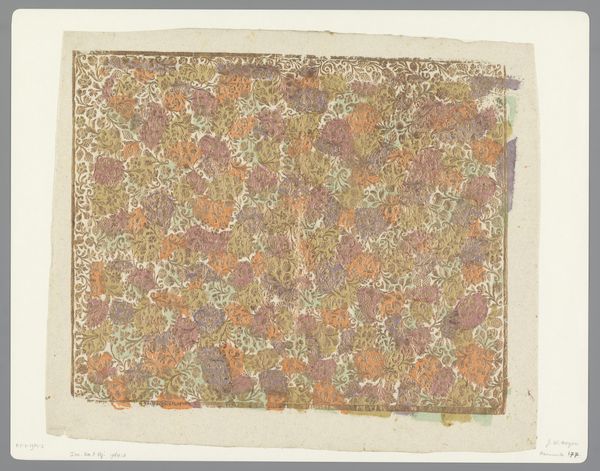
Dimensions: height 323 mm, width 214 mm
Copyright: Rijks Museum: Open Domain
Curator: Looking at this piece, I am immediately struck by the intricacy of the repeated forms; the artist has managed to make a drawing that is both lively and calming. Editor: Indeed. What we're looking at here is a carpet design from circa 1854-1864 by an anonymous artist. This piece exemplifies the organic motifs typical of textile production associated with the Arts and Crafts movement. It's a fascinating window into design principles, especially regarding labor conditions during industrial transitions. Curator: For me, the balance between geometry and floral patterns is mesmerizing. The way the artist uses a limited palette to create depth is intriguing; do you know if they would have been directly involved in production, or if it was factory made? Editor: Well, during the Arts and Crafts movement, design and production ideally occurred within workshops emphasizing collaboration. Given that textile designs like this were often commercial endeavors, understanding production means tracing specific workshop dynamics and relationships between designers, artisans, and potential manufacturers or retailers. But the focus on handcrafted production distinguished their ideals. Curator: Even just focusing on color alone, the dominance of the rich red in the background against the cooler greens and blues pulls me in. The interplay between form and function is beautifully handled here. Do you agree, or are you less struck by the aesthetics? Editor: It's hard to ignore aesthetic qualities, certainly, but consider the context. How would such patterns intersect within domestic spaces? Carpets signified particular economic status; they mediated labor involved in harvesting materials, manufacturing dyes, and production; the patterns often embodied social messaging accessible to different social classes involved from production to retail and reception. The pattern facilitates a way of thinking and making, offering the capacity for people to actively reimagine social norms by reimagining and reinventing domestic goods and practices. Curator: So, from your point of view, it seems less about the finished work of art and more about production relationships. It does sound as if it would take more than one weaver to deliver on something so intricate. I admit, though, the balance within that geometric frame in each corner still calls to me. Editor: I see it more as a convergence of social and visual meanings shaped through artisanal labor and production techniques and how they impacted consumption; ultimately the meaning of these textile designs go well beyond purely formal aesthetics. Curator: A thought-provoking connection, thank you. The discussion of class structures and production certainly shifted how I perceived those design choices. Editor: And for me, your detailed observation brought to life how it would resonate on an aesthetic level.
Comments
No comments
Be the first to comment and join the conversation on the ultimate creative platform.
